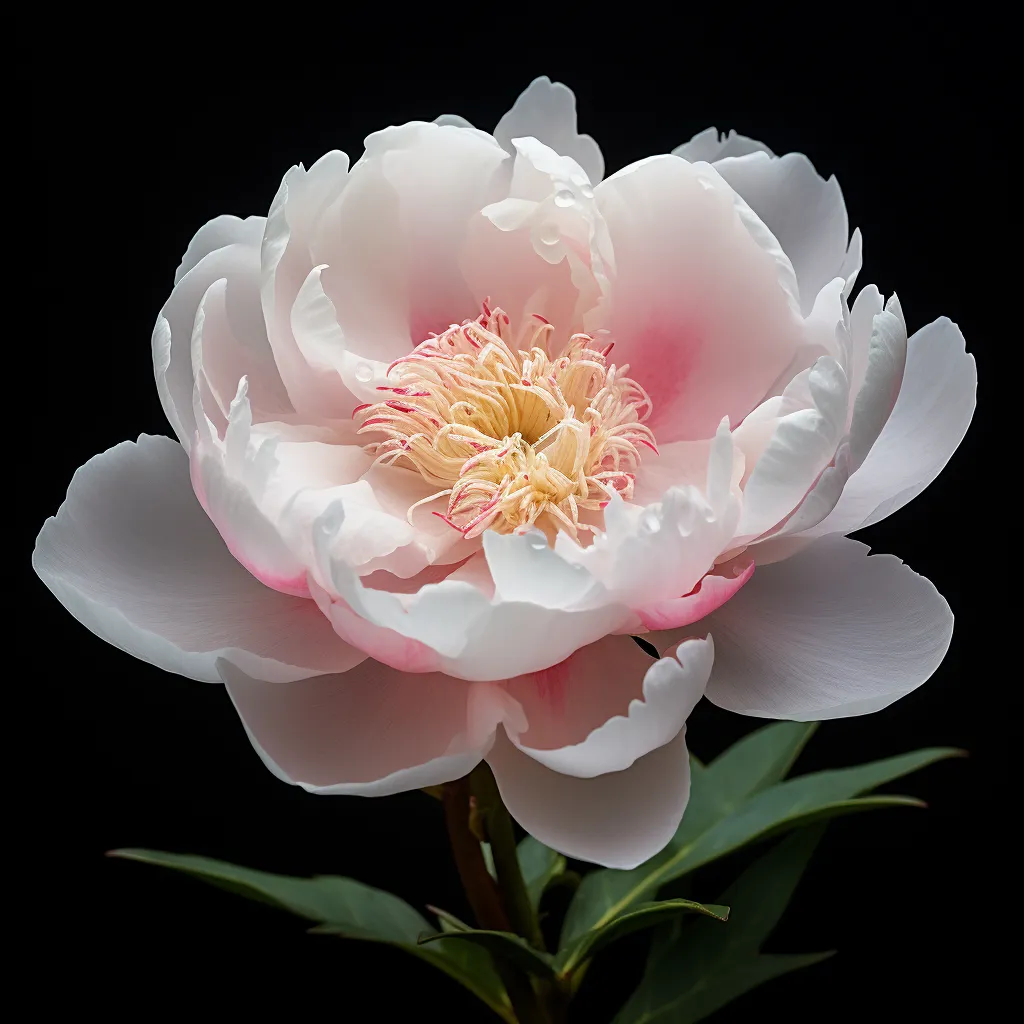Story of Day :
Contents
Paeonia lactiflora Moon of Nippon Plant Care Tips
Welcome, garden enthusiasts! Today, we are going to talk about one of the most beautiful and sought-after peonies in the world: Paeonia lactiflora Moon of Nippon.
With its delicate white petals and intoxicating fragrance, this peony is a must-have for any garden.
However, like any other plant, it requires proper care and attention to thrive.
So, let’s dive into some useful tips to keep your Moon of Nippon peony healthy and blooming!
Choosing the Right Location
The first step in taking care of your Moon of Nippon peony is selecting an ideal location for planting.
Peonies thrive in full sun or light shade conditions, so choose a spot that receives at least six hours of direct sunlight each day.
Additionally, make sure the soil is well-draining as peonies dislike having their roots sitting in water for too long.
Incorporate organic matter such as compost or well-rotted manure into the soil before planting to improve drainage.

Planting Your Moon of Nippon Peony
Now that you have chosen the perfect spot for your Moon of Nippon peony let’s move on to planting it:
- Dig a hole that is twice as wide and deep as the root ball.
- Gently place the root ball into the hole with eyes (buds) facing upwards.
- Cover with soil while making sure not to bury it too deeply; aim for leaving 1-2 inches aboveground.
- Water thoroughly after planting.
Maintaining Proper Watering Techniques
Watering is a critical aspect of peony care, and it’s essential to strike the right balance.
Here are some watering tips for your Moon of Nippon peony:
- Water deeply once a week during dry spells or if rainfall is scarce.
- Avoid overhead watering, as wet foliage can lead to fungal diseases.
- Apply mulch around the base of the plant to help retain moisture and prevent weeds.

Fertilizing for Optimal Growth
To ensure your Moon of Nippon peony reaches its full potential, regular fertilization is key.
Follow these guidelines:
- In early spring, apply a balanced slow-release fertilizer around the base of the plant.
- Avoid excessive nitrogen fertilizers as they can promote leaf growth at the expense of flowers.
- If you notice yellowing leaves or lackluster blooms, consider adding bone meal or compost for an extra boost.
Pruning Techniques
Proper pruning not only helps maintain the shape and size of your Moon of Nippon peony but also encourages healthy growth.
Here’s what you need to know:

- Cut back dead stems in late fall after they have turned brown and dried out naturally.
- Botrytis Blight: This fungal disease can cause flower buds to turn brown and mushy.
To prevent it, avoid overhead watering, improve air circulation around the plant, and remove any affected parts.
- Peony Wilt: This disease causes sudden wilting of the entire plant.
Unfortunately, there is no cure for peony wilt once it strikes.
The best course of action is prevention by planting in well-drained soil and practicing good sanitation.
- Aphids: These small insects can cluster on peony foliage and suck sap from the plants.
Regularly check your Moon of Nippon peony for aphids and spray with a gentle insecticidal soap if necessary.
In early spring before new growth appears, remove any weak or damaged stems.
To encourage bushier growth, pinch off any secondary buds that form on side shoots.
Remember not to remove too much foliage as it provides energy for next year’s blooms.
Pest and Disease Control
Moon Of Nippon Peonies are relatively resistant to pests and diseases.
However, it’s essential to keep an eye out for any potential issues.
Here are some common problems and ways to address them:

In Summary
Caring for your Moon of Nippon peony requires attention to detail but rewards you with stunning blooms year after year.
By choosing the right location, providing adequate water and nutrients, pruning when necessary, and being vigilant about pests and diseases, you can enjoy a flourishing garden full of these beautiful flowers.
Remember that each garden is unique, so adjust these care tips based on your specific environment as needed.
Happy gardening!